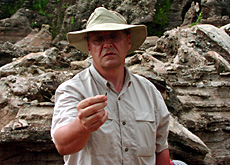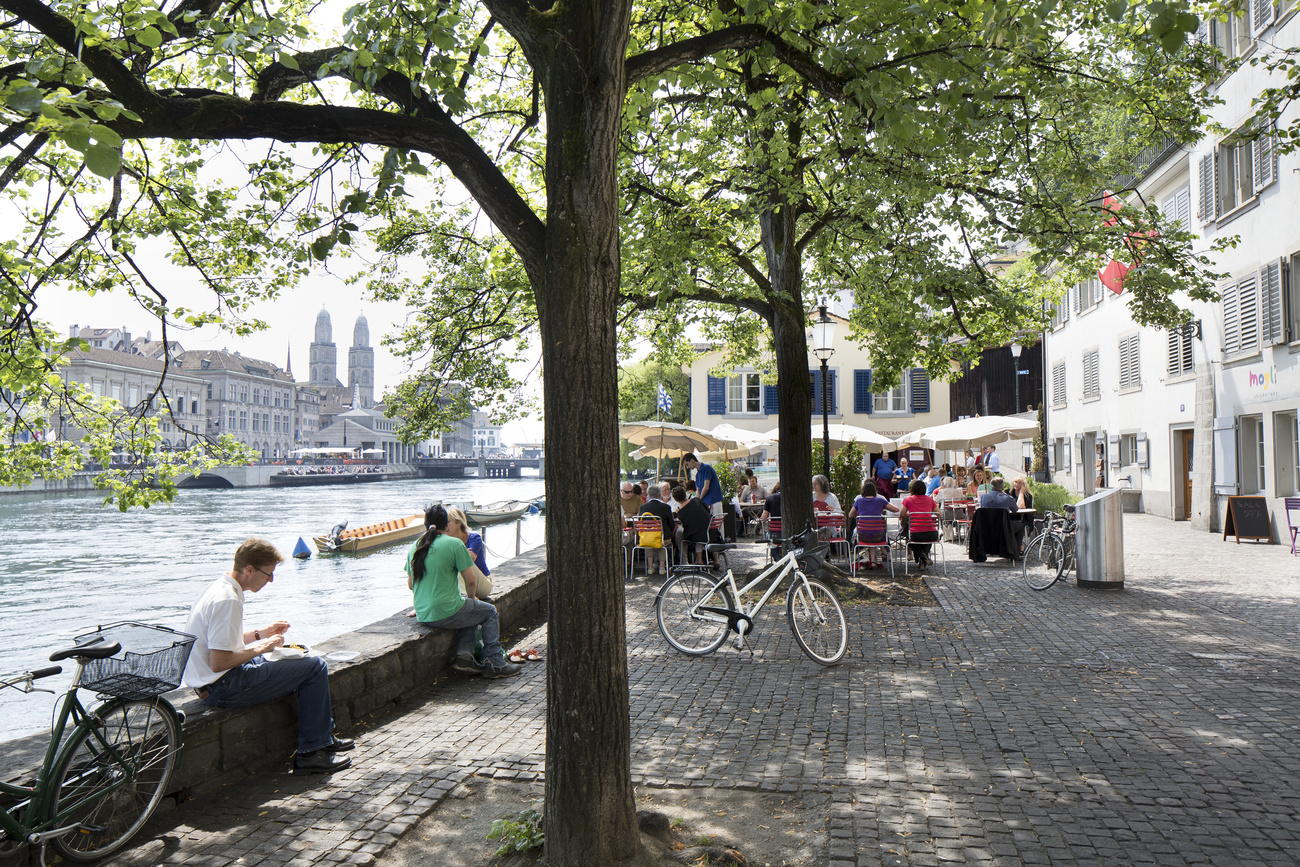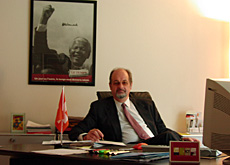Swiss scientists dig deep in South Africa

Switzerland is strengthening scientific ties with South Africa by cooperating on a research project aimed at finding out more about the human race.
Scientists at the University of Zurich have made groundbreaking discoveries in the South African province of Gauteng.
“We are trying to reconstruct the origins of the human race,” Peter Schmid, who is working on an excavation project in Gladysvale, told swissinfo.
“We are working in a cave into which animals dragged their prey between 500,000 and two million years ago,” added Schmid, a paleoanthropologist at Zurich University.
The Gladysvale caves are located 14km northeast of Sterkfontein – dubbed “The Cradle of Humankind” – where the Scottish-born anthropologist, Robert Broom, discovered “Mrs Ples” in 1947.
“Mrs Ples” is the nickname given to the fossil of a scull of the Australopithecus africanus race, which is considered a direct ancestor of modern man.
Gladysvale project
Schmid has worked on the Gladysvale excavations – a joint project of the University of Zurich and the University of Witwatersrand in Johannesburg – since 1995. The project is partly funded by the Swiss National Science Foundation.
The project serves as an opportunity for Swiss and other European students to get to know South Africa.
“They all love South Africa, and many of them have been here a few times already,” said Schmid.
“They learn how to excavate, they get to know the original fossils of humankind and they have the opportunity to visit the sites where the fossils were found.”
Schmid’s team has already made historic discoveries in Gladysvale. “We have found the remains of a giant hyena, in fact it was the biggest hyena scull ever found,” Schmid added.
He says it is “fascinating” and “a privilege” to be able to work at the “Cradle of Humankind”, which is now a Unesco World Heritage Site.
Normal circumstances
“There are many excavation sites in Africa, but here in South Africa it’s possible to work under normal circumstances,” he told swissinfo.
“The contract we signed with the University of Witwatersrand states that the fossils must remain here, but we can make casts if we want to study them.
“Our findings are published jointly.”
Schmid says that in some other countries authorities charge huge amounts for the right to work on projects like this.
“We have a very good relationship with the South African authorities and we want South African students to come to work in Switzerland,” Schmid told swissinfo.
But although he believes they would benefit from time in Switzerland, Schmid concedes that the high cost of living could pose a problem for South African students.
Scientific cooperation
In August 2002 the Swiss National Science Foundation and the South African National Research Foundation signed a cooperation agreement, which regulates the exchange of scientists, bilateral seminars, joint research projects and the exchange of information and experiences.
Anne-Marie de Buman represents Switzerland in this project, the first of its kind in the southern hemisphere. “That’s why it is a pilot project,” she told swissinfo.
“We act as a kind of window for Swiss science abroad,” said de Buman, whose project is linked to the Swiss Science Agency, which is part of the interior ministry.
The Swiss Development Agency (SDC), the Swiss National Science Foundation and the Swiss Science Agency are involved in the project.
Although de Buman keeps in close contact with the South African authorities and institutions involved, she says working with different cultures is not always easy.
But she believes the country has huge scientific potential.
“South Africa is a wonderful country. What is seen as a problem in Switzerland is simply considered a challenge here,” she said.
swissinfo, Jean-Michel Berthoud in Pretoria
Dr Peter Schmid of Zurich University leads the excavation project in Gladysvale.
The main goal is to reconstruct the living conditions and the environment of Australopithecus africanus, an ancestor of modern man.
It is a joint project of Zurich University and the University of the Witwatersrand.
On August 6, 2002, the Swiss National Fund and the South African National Research Foundation signed an agreement on promoting scientific ties between Switzerland and South Africa.
The agreement regulates the exchange of scientists, bilateral seminars, joint research projects and the exchange of information.
The Swiss-South African excavation project in the Gladysvale caves in the northern province of Gauteng is partly funded by the Swiss National Science Foundation.

In compliance with the JTI standards
More: SWI swissinfo.ch certified by the Journalism Trust Initiative










You can find an overview of ongoing debates with our journalists here . Please join us!
If you want to start a conversation about a topic raised in this article or want to report factual errors, email us at english@swissinfo.ch.